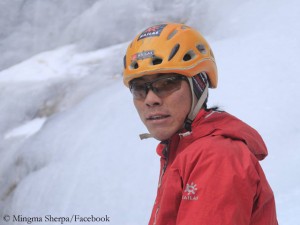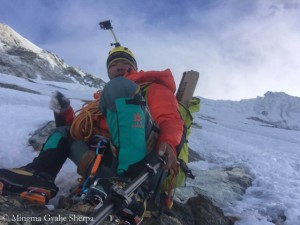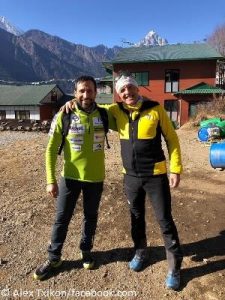If savings are made at the wrong end
“I am not in the government to wait and see”, Ananda Prasad Pokharel said in early November after his appointment as the new Nepalese Tourism Minister. “I am here to change.” However, one of his first initiatives concerning mountain tourism doesn’t testify his farsightedness but looks more like a crazy idea. Pokharel’s ministry plans to reduce the insurances for Nepalese staff on expeditions – by up to 60 percent on mountains that are lower than 6,500 meters. Thus mountain tourism should be stimulated again, it said. The visitor numbers in Nepal had slumped dramatically after the devastating earthquake in April and also because of the still existing blockade of the border with India.
Even many Nepalis shake their heads about the government’s plan. “As an owner of the agency Dreamers Destination Trek, I prefer reduction in every kind of insurance. It is good for my company and it is good for my clients”, Mingma Gyalje Sherpa writes to me. “But being myself a climber and born in a climber’s family, I wish an increment of insurances in favor of climbers.”
Barely able to make ends meet
The 29-year-old, who has already climbed seven eight-thousanders and recently made headlines by solo climbing the difficult West Face of 6685-meter-high Chobutse for the first time, describes his father’s fate: He had been a top climber at his young age, but in 1983 on Everest, he had lost eight fingers due to frostbite. Afterwards his father had never been given the opportunity to participate in big expeditions and to earn good money. He had been barely able to make ends meet. “Those people who make rules should better take these points into consideration.”
“This is nothing at present time”
Mingma considers the insurances, which are paid in case of death to the families of the victims, to be much too low: for expeditions on mountains higher than 6,500 meters, 15,000 US dollars for high altitude porters and mountain guides and $ 8,000 for Base Camp staff. “This is nothing at present time”, says Mingma. He argues to raise not only these insurances but also those for helicopter rescue, rather than reducing it. $ 10,000 on high mountains are by far not enough to cover the costs incurred in case of an accident, he says. A rescue flight above 7,000 meters will cost significantly more than $ 15,000. During his descent on Chobutse, Mingma himself had got in trouble and been flown out by helicopter: “My rescue charge war $ 15,400. I hardly get $ 10,000 from the insurance company, the remaining amount I have to pay out of my own pocket.”
2016 will decide the future
There are significantly more effective means to boost tourism in Nepal than cutting insurances, says Mingma. So the government should “provide a stable political situation”. In addition they should extend the 2015 climbing permits for further two to three years: “There are some climbers who were in Nepal for climbing Everest and Lhotse in 2014 and 2015. They have spent lots of money and must be frustrated and hopeless because of those two bad years.”
The Tourism Ministry should focus on showing that Nepal is a safe travel destination in every respect, says Mingma. “If the year 2016 goes well, the upcoming years will be good by itself.”










